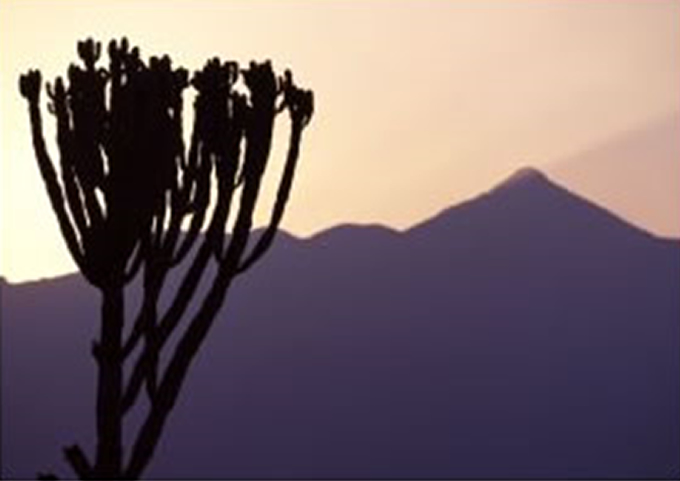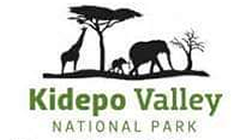The vegetation of the park can be categorised into four associations; the Narus Valley contains grey-haired acacia (Acacia gerrardii) savannah woodland that emerges in the south and into a fire climax grassland, tree and shrub steppe and slowly graduates into bush lands with forests on the higher mountain slopes. The borassus palms (Borassus spp.) follow ridges that are associated with water and sand alluvial soils, and are common along the major rivers of Kidepo, Lopirpir and Kulao.
 Much of the park is composed of open savannah grassland, dominated by a mixture of acacia and other perennial grasses, such as Themeda, Chloris, Panicum and Seteria species. Dry thickets composed of numerous short trees and shrubs also common. This vegetation is usually dry for more than a half of the year and antelopes such as Guenther’s dik-dik (Madoqua guentheri), which is found nowhere else in Uganda, are common in such habitats.
Much of the park is composed of open savannah grassland, dominated by a mixture of acacia and other perennial grasses, such as Themeda, Chloris, Panicum and Seteria species. Dry thickets composed of numerous short trees and shrubs also common. This vegetation is usually dry for more than a half of the year and antelopes such as Guenther’s dik-dik (Madoqua guentheri), which is found nowhere else in Uganda, are common in such habitats.
Kidepo Vally National Park has high biodiversity, with at least 86 mammal species, 475 bird species and 692 plant species, second only to Queen Elizabeth NP in terms of its known plant diversity and third behind Queen Elizabeth and Murchison for its mammal and bird diversity. Twenty-eight of the 86 species of mammals in KVNP are not found in any other of Uganda’s national parks. Some of the animals unique to this park include striped hyaena (Hyaena hyaena), aardwolf (Proteles cristata), caracal (Caracal caracal), cheetah (Acinonyx jubatus), greater and lesser kudu (Tragelaphus strepsiceros and Ammelaphus imberbis), klipspringer (Oreotragus oreotragus), dik-dik, Bright’s gazelle (Nanger granti brighti) and Chandler’s mountain reedbuck (Redunca fulvorufula chandleri). The beisa oryx (Oryx beisa) and the roan antelope (Hippotragus equinus) are believed to have been extirpated from the region. African wild dogs (Lycaon pictus) have been observed to come into the park from Sudan occasionally but are not resident in the park. Many of the other large mammals found elsewhere in Uganda such as African elephant (Loxodonta africana), zebra(Equus spp.), buffalo (Syncerus caffer), waterbuck (Kobus ellipsiprymnus), Jackson’s hartebeest (Alcelaphus buselaphus jacksoni), lion (Panthera leo), leopard (Panthera pardus), and both black-backed and side-striped jackal (Canis mesomelas and C. adustus), are found here.
The park is outstanding for its birds of prey, of which 58 species have been recorded including lammergeier (Gypaetus barbatus), Verreaux’s eagle (Aquila verreauxii), the pygmy falcon (Polihierax semitorquatus), and Egyptian vulture (Neophron percnopterus). Fourteen raptors are unique to this park in Uganda. Of the hornbills (Bucerotidae) which are characteristic of the savannah habitat, five species are represented. Some of Africa’s rarest and most sought after birds occur in KVNP, including the the Karamoja apalis (Apalis karamojae) and black-breasted barbet (Lybius rolleti).
The Narus valley is very important for the elephants in the park and also holds a population of Nile crocodiles (Crocodylus niloticus), which, during the dry season, is restricted to a 10 km long section of the Narus River that retains water intermittently in depressions or pools. Perhaps due to limited availability of food, water and space, the crocodiles have a diminutive size with a maximum length of 2.5 m. (Nile crocodiles regularly exceed 4m in other parts of the species range).
